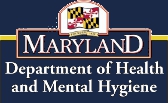Health Care Reform & Safety Net Providers
The Affordable Care Act (ACA) is expected to increase access to health insurance coverage for more than 350,000 Marylanders, but will also challenge safety net providers to shift their business model and expand services to meet the health care needs of a growing insured population. The day after the ACA was signed into law, the O’Malley Administration issued an Executive Order (01.01.2010.07) creating the Health Care Reform Coordinating Council (HCRCC), which is co-chaired by Lieutenant Governor Anthony G. Brown and DHMH Secretary Joshua M. Sharfstein, MD. The HCRCC provides recommendations for the ongoing implementation of health reform and is coordinated by the Office of Health Care Reform.
Maryland is moving forward in implementing the ACA. The Maryland Health Benefit Exchange Act of 2012, which was signed by the Governor, and 2011 legislation (HB 166/SB182) the Maryland Health Benefit Exchange Act of 2011, will place Maryland on track to have the Maryland Health Benefit Exchange, certified as operational by January 2013. The Maryland Health Benefit Exchange is a transparent marketplace where consumers can choose among benefit plans offered by private insurers and determine their eligibility for public insurance and federal tax credits. The exchange is mandated by the ACA and will assist uninsured and underinsured Marylanders to obtain affordable health insurance.
A report issued in 2011 by the HCRCC tapped the CHRC to support the following activities:
(1) Provide technical assistance to safety net providers as they prepare to implement health reform; and
(2) Provide assistance to Local Health Departments as they develop their Local Health Implementation Plans.
These recommendations became the subject of legislation approved by General Assembly (HB 450/SB 514) which directed the CHRC to submit a business plan to the State to assist safety net providers in implementing the Affordable Care Act and related reforms.
The business plan issued by the CHRC reflects feedback and guidance from local health departments, community health centers and other safety net providers. The business plan suggests the following priority recommendations for the CHRC’s provision of technical assistance to community health resources:
(1) Provide technical assistance and support related to “mechanics” of health reform legislation;
(2) Work with DHMH, the Governor’s Workforce Investment Board and other agencies to support statewide plans for workforce development;
(3) Assist community health resources providers by facilitating access to data and interpreting or translating this data to meet customized needs;
(4) Support efforts to develop expanded systems for eligibility and enrollment of uninsured and underinsured patients; and
(5) Catalyze innovative public-private partnerships that will leverage additional private resources.
CHRC Business Plan, with the appendix items (108 pages, this may take a few minutes to download)



